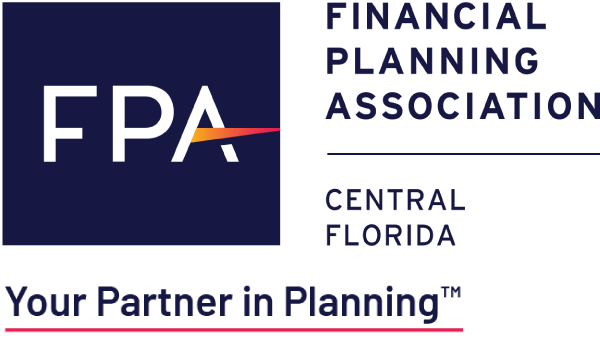
Planning for Nine of Life’s Biggest What-ifs
 Life is full of “what-ifs” — difficult-to-foresee developments that, if they come to pass, can turn a person’s life upside down, particularly if he or she hasn’t taken steps to plan for them in advance. One of those big what-if’s became a “what now?” for FPA member Kelly Hokanson in 2016, when the then-45-year-old was diagnosed with Stage 2 colorectal cancer.
Life is full of “what-ifs” — difficult-to-foresee developments that, if they come to pass, can turn a person’s life upside down, particularly if he or she hasn’t taken steps to plan for them in advance. One of those big what-if’s became a “what now?” for FPA member Kelly Hokanson in 2016, when the then-45-year-old was diagnosed with Stage 2 colorectal cancer.
Fortunately for Hokanson, not only was the prognosis for treatment and recovery favorable, so, too, was the prognosis for her and her family to weather what could have been a devastating financial blow. In Hokanson’s case, and in many others like it, the key to avoiding potentially dire financial consequences when one of life’s big what-ifs becomes reality was planning in advance. As little control as people may have over those what-ifs, there are steps they can and should take, just in case, to minimize the damage and get on with life.
Hokanson had the foresight to purchase long-term disability insurance prior to her cancer diagnosis, so a sizable portion of her income was covered during the year she took away from work to get treatment. Likewise, the firm that employs her had also protected itself from such an occurrence with a business overhead insurance policy that reimbursed the company for a portion of the revenues it would lose during Hokanson’s leave of absence.
Nowadays, fully recovered and back in her job as a CERTIFIED FINANCIAL PLANNER™ (CFP®) professional at the Planned Approach, a financial planning firm in Kansas City, Mo., Hokanson says she frequently shares her personal story with clients to underscore just how important it is to plan ahead for life’s big what-ifs. Those what-ifs have to do not only with health issues but with employment status, with the behavior of the stock market and the economy, with disasters that can damage or destroy home and property — the list is long. Here Hokanson and several of her peers in the financial planning world provide insight on how to address the most significant and potentially damaging what-ifs on that list.
- What if you lose your job? The loss of a job, and the income that accompanies it, can ambush a person’s finances. The bills keep coming, even when the income isn’t. If you have an emergency fund — a reserve of readily accessible cash — you can tap that reserve instead of resorting to running up credit card debt, selling investments, tapping into retirement accounts prematurely or taking other less-than-optimal measures to cover hard expenses. How much of a reserve? As a general rule of thumb, Hokanson suggests three to six months’ worth of living expenses for people in their 20s and 30s, and perhaps more than that for those in their 40s, 50s, 60s and beyond.
It is also good to know that, subject to certain conditions, a person, if they are unemployed, can take penalty-free distributions from an individual retirement account (IRA) to cover the cost of medical insurance.
- What if you (or your spouse) are disabled and unable to work and/or require an extended period of care? According to the Council for Disability Awareness, more than one in four of today’s 20-year-olds can expect to be out of work for at least a year because of a disabling condition before they reach retirement age. To address this likelihood, invest in a long-term disability insurance policy. And, “make sure that your long-term disability policy will cover you if you cannot do your current job, not just [cover] pay if you can't do any job,” adds FPA member Monica L. Dwyer, CFP® with Harvest Financial Advisors in West Chester, Ohio.
For a person nearing retirement or already retired, planning for healthcare expenses gains a greater sense of urgency. There are two general approaches to covering those costs: (1) self-insure by earmarking a portion of retirement funds specifically to cover healthcare and medical expenses; and (2) investing in long-term care insurance, a type of policy that covers some or all the costs associated with long-term care provided at home, in a nursing home, etc. Long-term care coverage can be purchased on a stand-alone basis or as an add-on to a life insurance policy (typically less costly but with less robust coverage).
For some, combining self-insurance with an actual insurance policy makes the most sense.
- What if a disaster — fire, flood, wind, etc. — does significant damage to your home and property? Before disaster strikes, document the state of your home and its contents with still and video images, plus a written inventory, suggests FPA member Leon C. LaBrecque, CFP®, who heads LJPR Financial Advisors in Troy, MI. Store all that information remotely, in the cloud. And confirm with your insurance company that you are carrying an appropriate level of homeowner’s or renter’s insurance — preferably enough to cover replacement of the contents of your home.
- What if you (or your spouse) die? If the worst happens, you want the assurance that your spouse or partner, as well as children and other dependents, will be fine financially. Life insurance covers that what-if by supplying beneficiaries with a sum of money, called the death benefit. That benefit typically passes tax-free to the beneficiaries named in the policy. If there’s a person or people in your life who would suffer financially as a result of your dying — a spouse, a child, or even a business partner — you are a strong candidate for some type of life insurance policy.
It’s also important to assemble all your estate documents, including a will, powers of attorney and the like, and put them in a safe but accessible place, along with other key documents like an inventory of assets, plus financial/investment/retirement/bank/credit card account numbers and PINs, insurance policy information, as well as beneficiary designations for these accounts and insurance policies. If possible, keep hard copies as well as digital copies. And be sure a person you trust knows how to access them all.
- What if the economy spirals back into recession and/or the stock market slumps for a prolonged period? History suggests it’s not a matter of if, but when, the next recession will hit. With that in mind, it’s important that people position their assets so they’re protected to some extent from a stock market nosedive. That protection generally comes through diversification. When a portfolio of assets, including retirement accounts, taxable investment portfolios, real estate holdings, cash reserves and more, is appropriately diversified, some of the individual asset classes inside the portfolio will, by design, behave differently from the others over time instead of moving in lockstep. Diversification thus is a matter of building a mix of assets whose behavior doesn’t always correlate. This use of non-correlated assets is designed to level out the peaks and valleys in the overall performance of a person’s full portfolio of assets, while still providing growth potential.
“The best way to protect yourself is to invest in an asset allocation that you are comfortable with during downturns, understanding that you will give up some return for a lower level of risk but that you will also experience less volatility,” Dwyer explains. “Remember that the worst years in the [stock] market are followed by the best years in the [stock] market, so after you have chosen the appropriate allocation of your stocks and bonds, ride it out.”
- What if you’re hit with a major unexpected expense? Here’s where the emergency fund shows its value. Major unexpected home or auto repair? Need to provide a friend or family member with a loan in a pinch? Dipping into a cash reserve in these types of situations is preferable to liquidating investments, for example, or running up a big credit card balance.
- What if your kids or your parents need to move in with you? These what-ifs are all too real for many families. A cash reserve can help cover the added expense that often accompanies providing housing to adult kids or aging parents. Communication and planning are also key to working through what can be a sticky family dynamic. Talk openly with the involved parties about the type of support (financial and otherwise) you’re able to offer, for how long, and about other financial responsibilities and expectations with the arrangement. Then put it in writing. If necessary, enlist an objective third party, such as a financial planner, for perspective and guidance, as emotions sometimes can derail family financial discussions and cloud decision-making. To find a CERTIFIED FINANCIAL PLANNER™ (CFP®) professional in your area, search the Financial Planning Association’s national database of personal finance experts at www.PlannerSearch.org.
- What if you live to 100? “Longevity is a serious risk,” says LaBrecque. Running out of assets and income during retirement is not an acceptable outcome. To ensure it doesn’t happen to you, when retirement is looming closer, develop a plan for spending down your assets in retirement, with a focus on creating an adequate (and tax-efficient) income stream that lasts as long as you need it to. Here’s where a financial planner with retirement expertise can prove invaluable.
- What if your teenager runs into a busload of plaintiffs’ attorneys, or Fido bites someone at the dog park? An umbrella insurance policy provides a valuable (and typically very affordable) financial safety net in case you’re in a position of liability in one of these “catch-all” types of situations, explains LaBrecque. For example, a new 16-year old driver is a minor and the parents can suffer significant liability issues for their actions.
October 2018 — This column is provided by the Financial Planning Association® (FPA®) of Central Florida, the principal professional organization for Certified Financial PlannerTM (CFP®) professionals. FPA seeks to elevate a profession that transforms lives through the power of financial planning. Through a collaborative effort to provide more than 23,000 members with tools and resources for professional education, business support, advocacy and community, FPA is the indispensable resource for CFP® professionals. Please credit FPA of Central Florida if you use this column in whole or in part.
The Financial Planning Association is the owner of trademark, service mark and collective membership mark rights in: FPA, FPA/Logo and FINANCIAL PLANNING ASSOCIATION. The marks may not be used without written permission from the Financial Planning Association.

